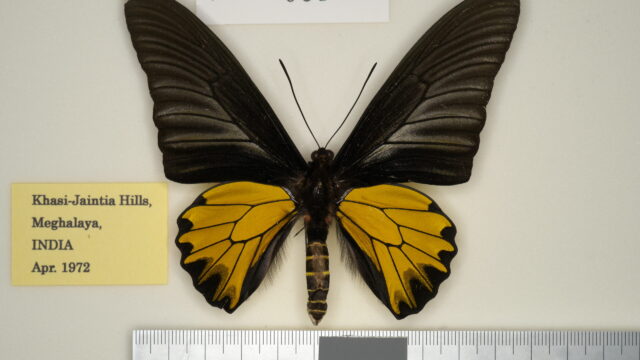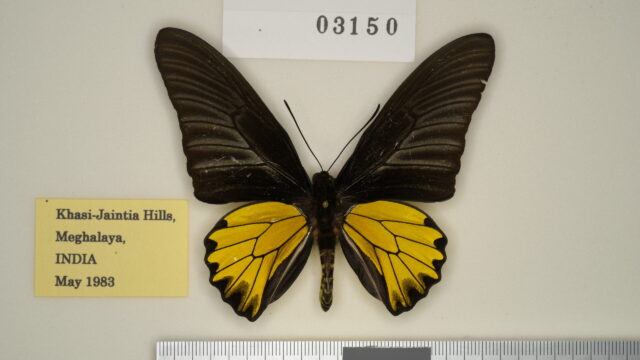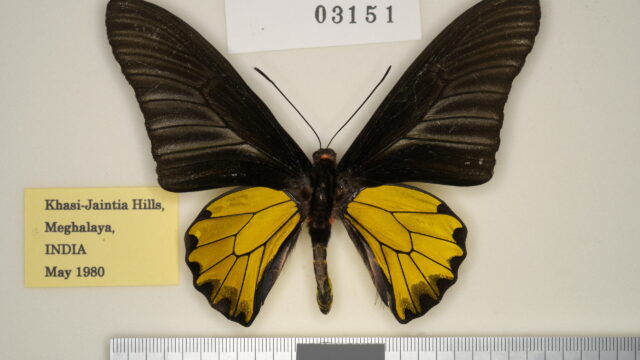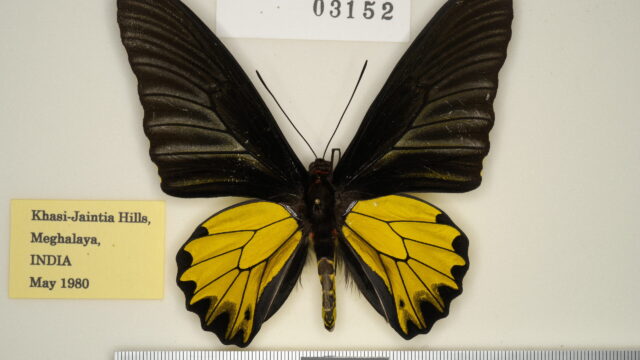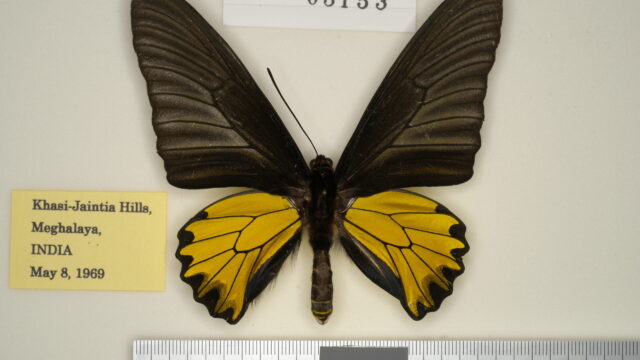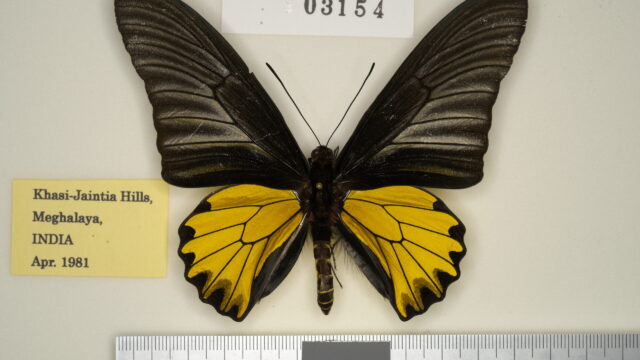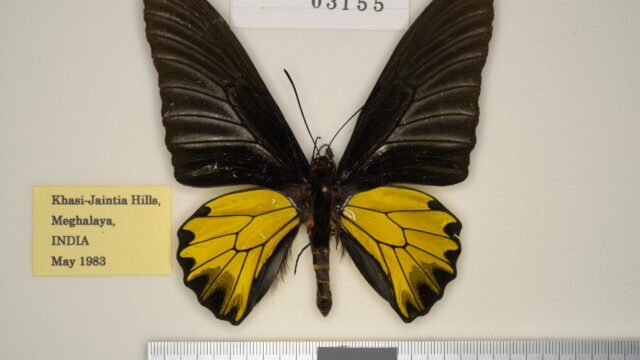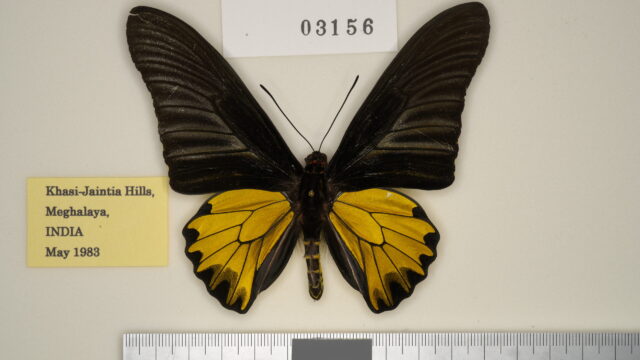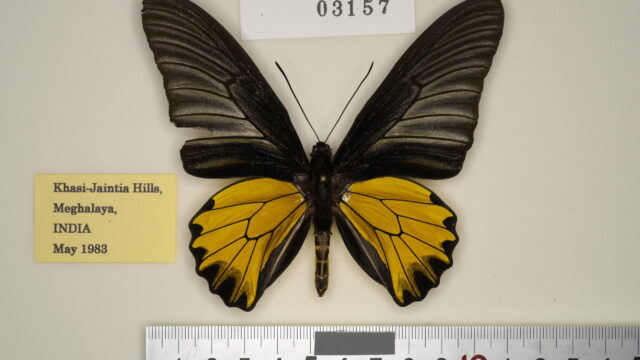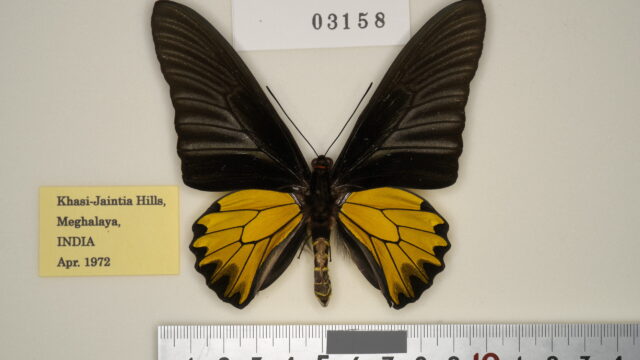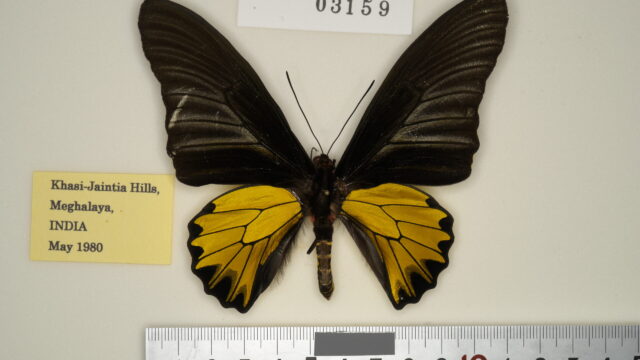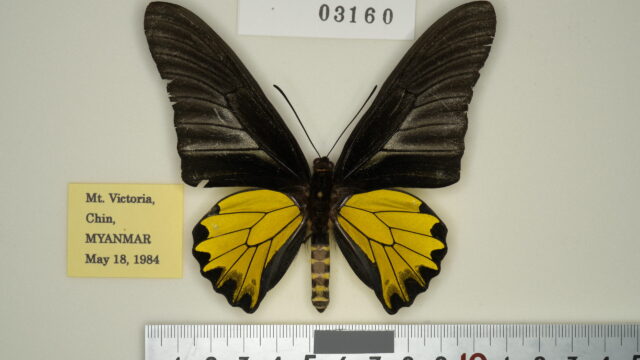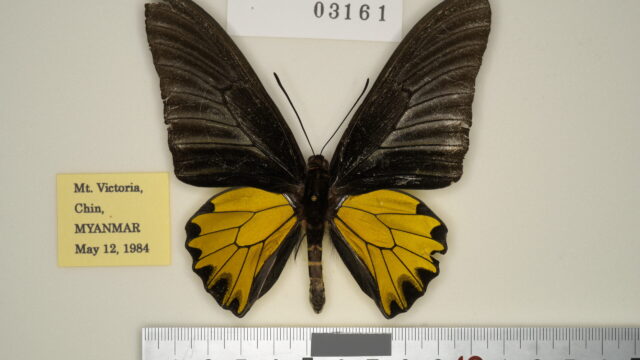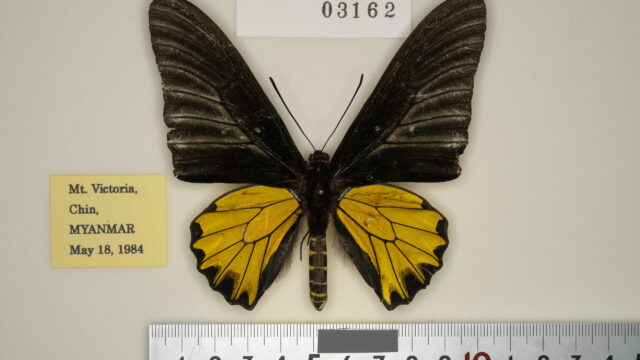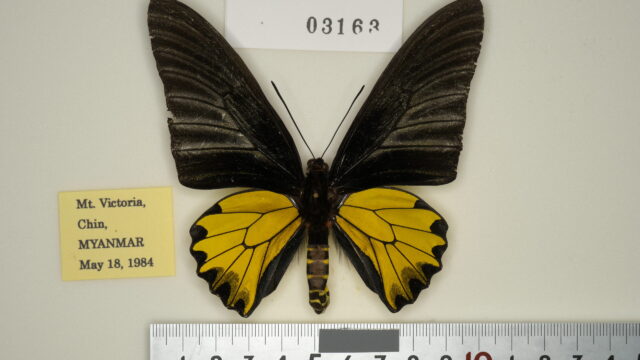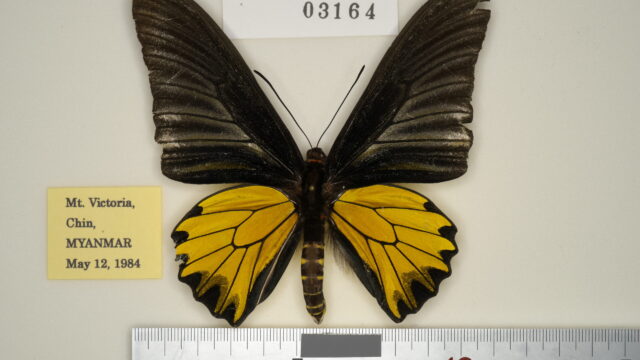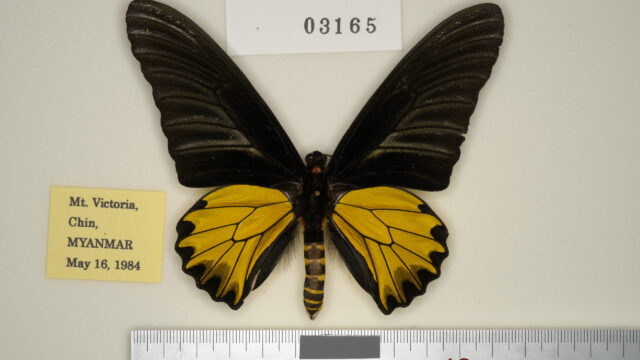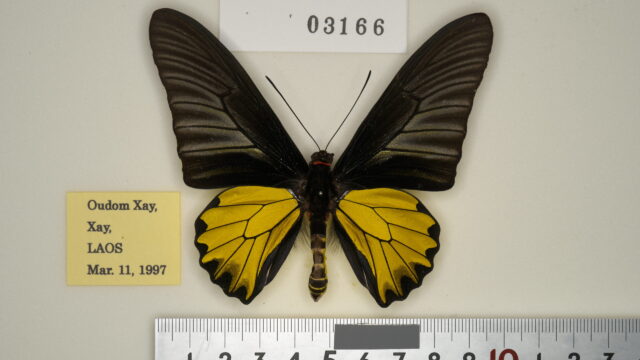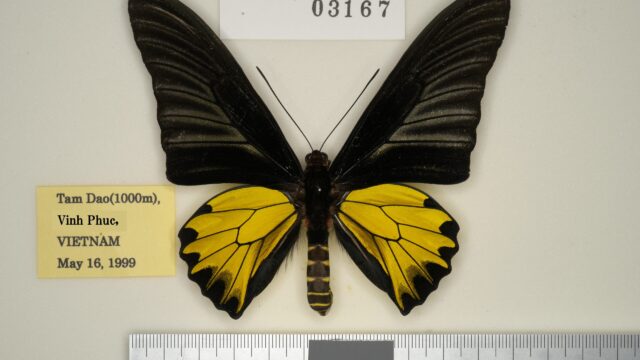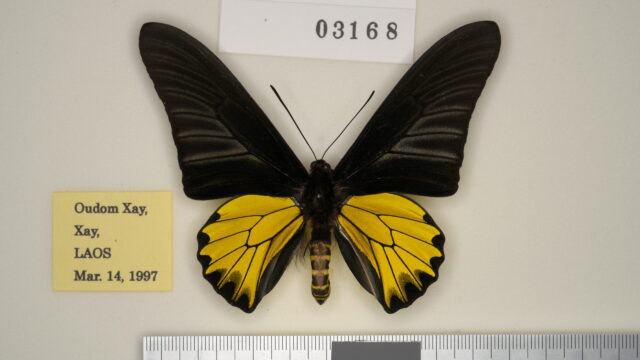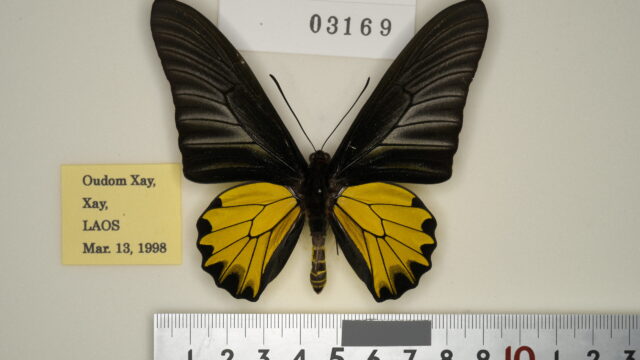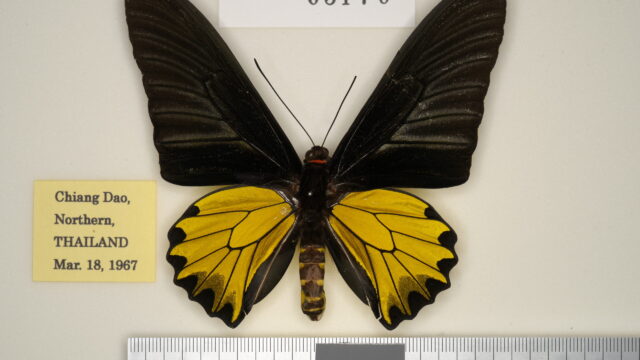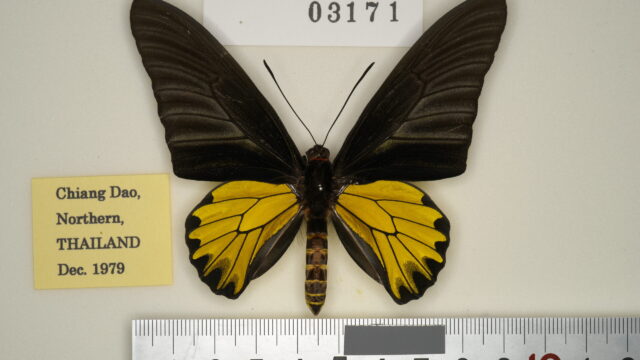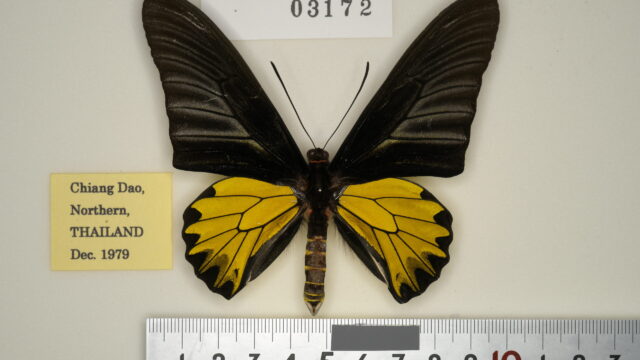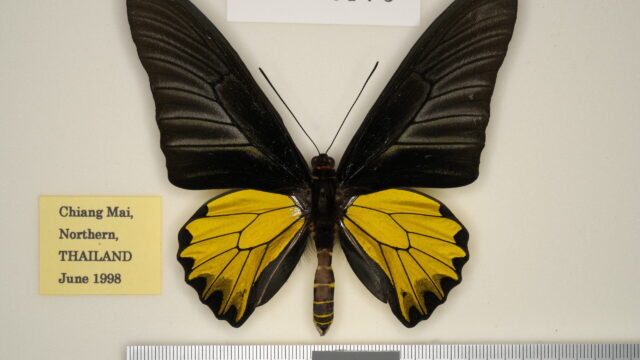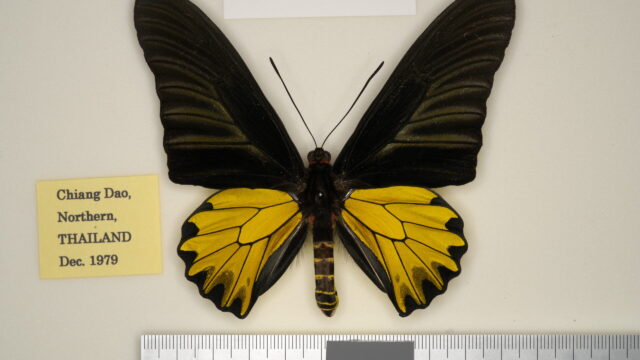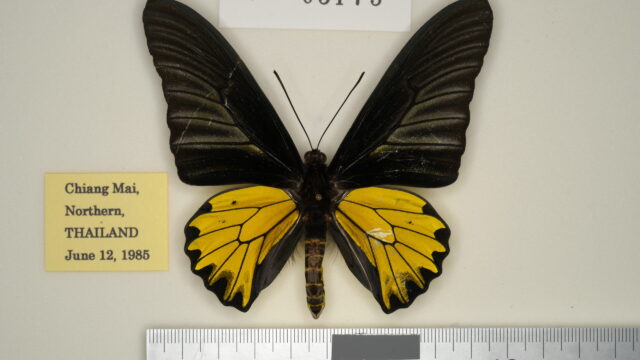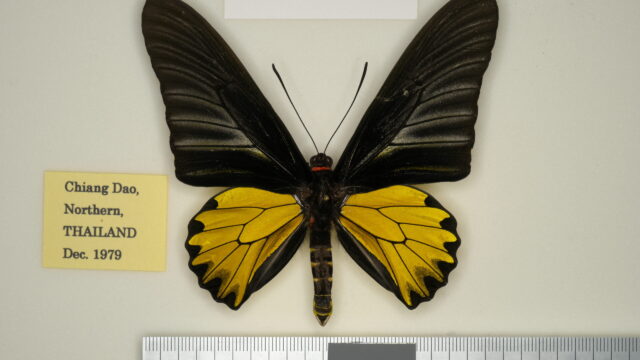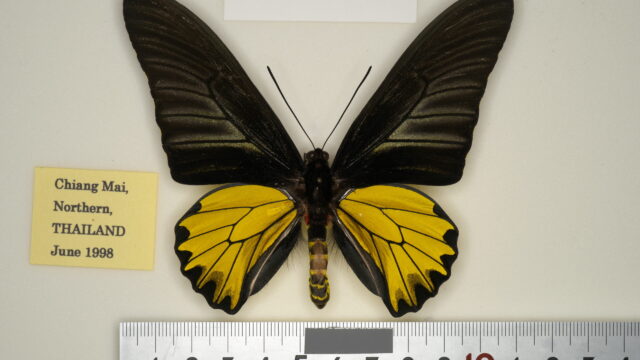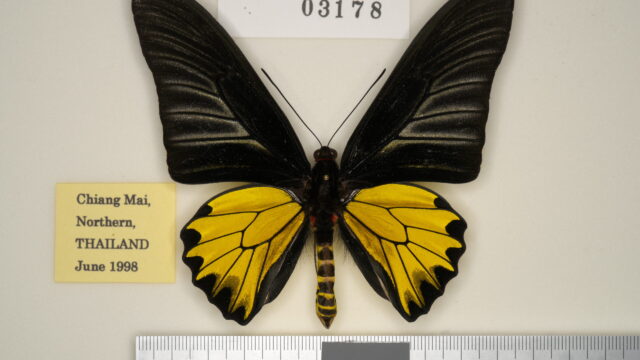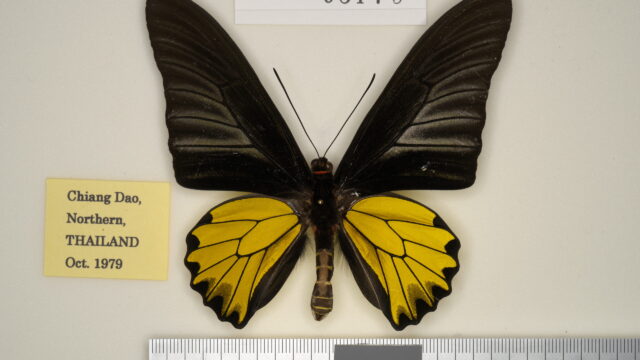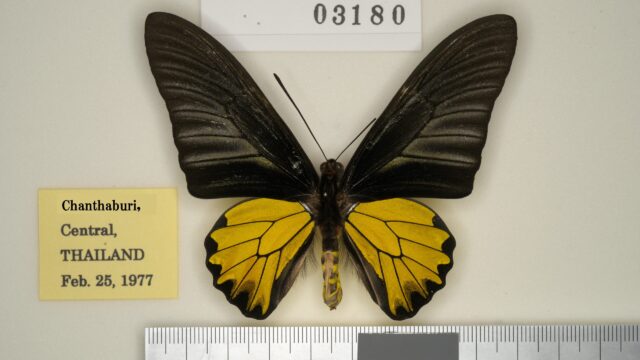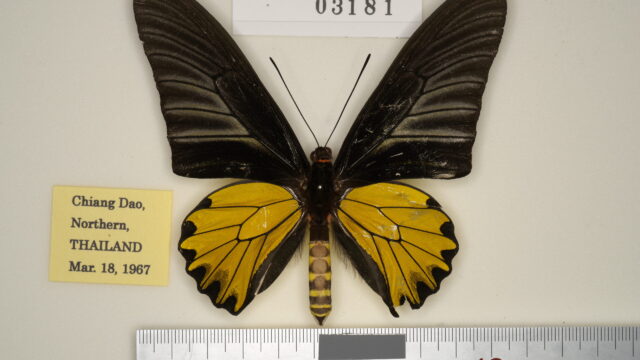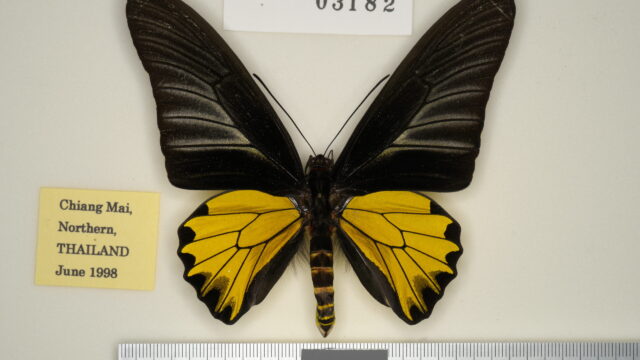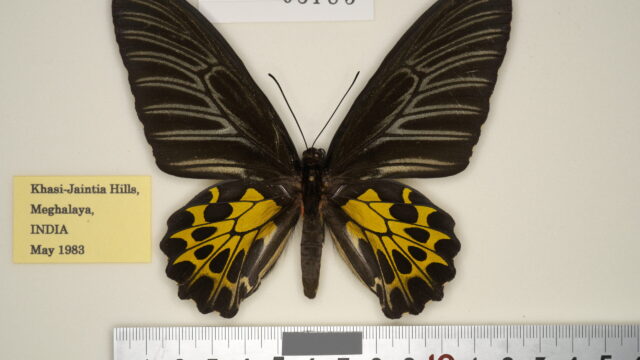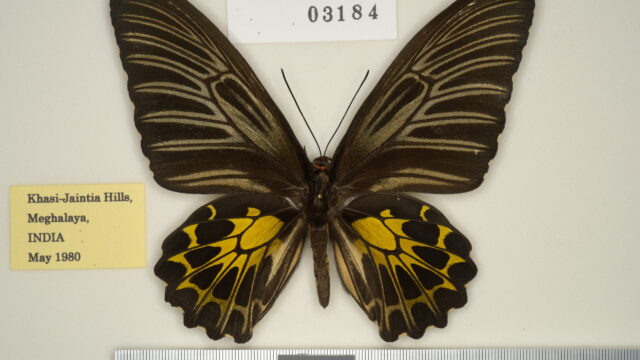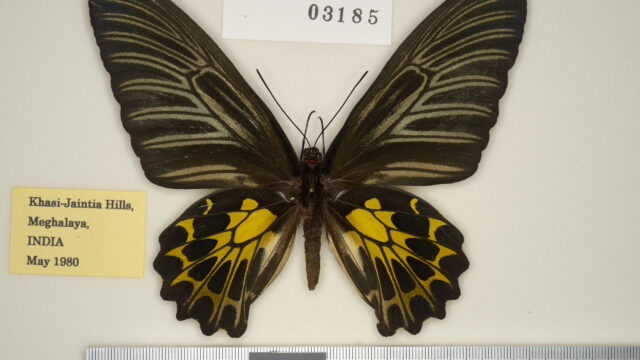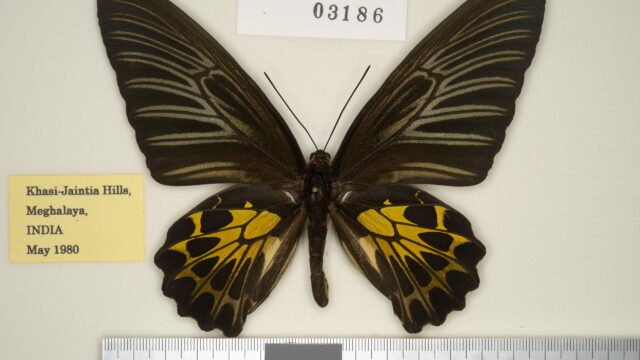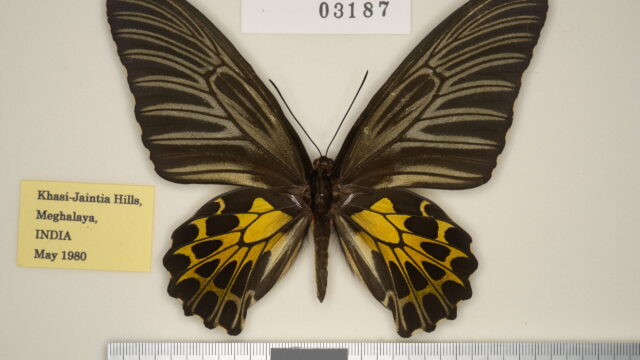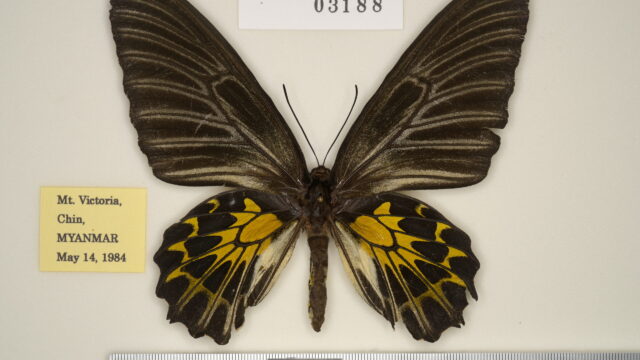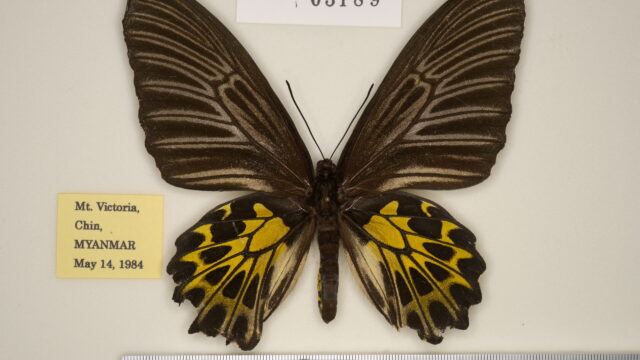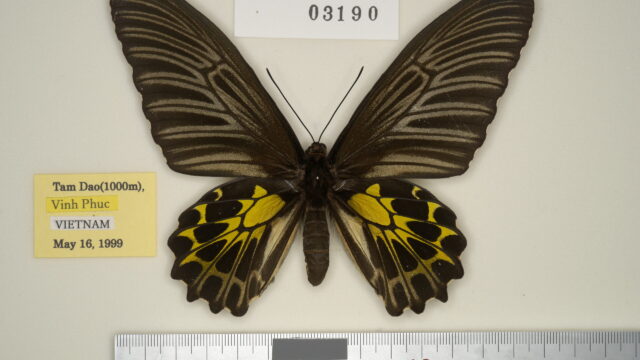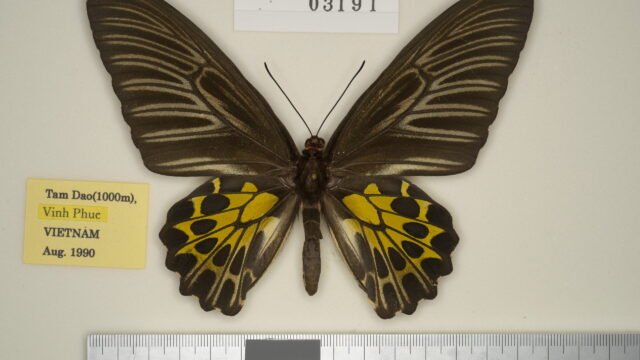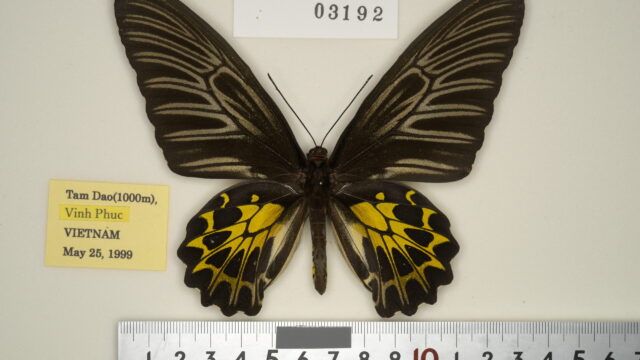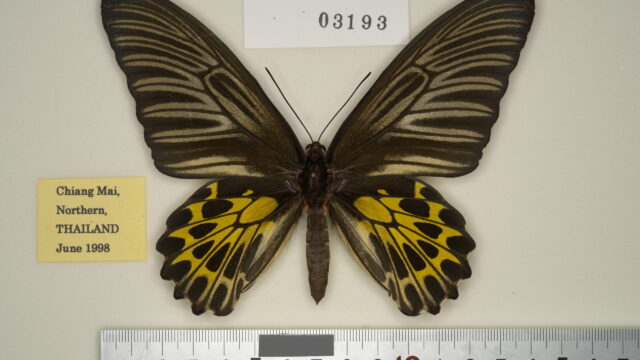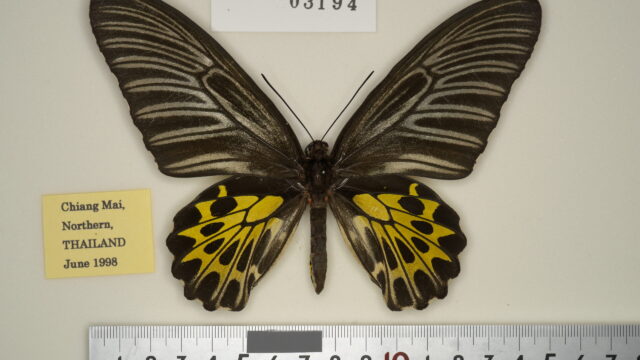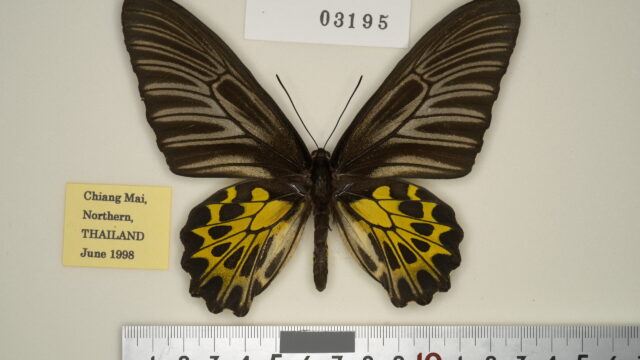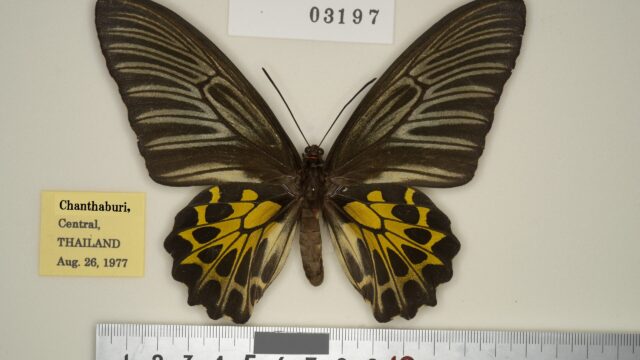- Ssp. aeacus (Felder, 1860)4) [♀] [♂: rhadamanthus, (Doubleday, 1846)3)]
=rhadamanthus, (Boisduval, 1836)2) [♀] (➡rhadamantus)
=rhadamanthus, (Doubleday, 1846)3) (nec (Boisduval, 1836)2) )[♂, ♀] (Cochin China (=Vietnam))
=thomsonii (Bates, 1875)1) [♂] (Siam (=Thailand))
=praecox (Fruhstorfer, 1913)6) [♂, ♀] (Bankok, Siam (=Thailand))
(Distribution) [Map 151]
NEPAL (Dana, Tatopani, Ghorepani, Pokhara Valley, Kathmandu, Godawari, Jiri, Dharan, Mahabharat Mts.); INDIA [Himachal Pradesh] Simla, [Uttarakhand] Mussoorie, Dehra Dun, Tehri, [Sikkim], [Arunachal Pradesh] Kameng River basin, Siang, Mishmi Hills, Lohitpur, [Assam] Gauhati, Brahmaputra, Rengma Hills, Silchar, [Meghalaya] Khasi-Jaintia Hills, Shillong, [Nagaland] Naga Hills, [Manipur], [Orissa], [West Bengal] Darjeeling; BHUTAN; BANGLADESH; CHINA [Xizang Ziziqu = Tibet] Lhasa, Yarlung Zangpo Jiang (=Zangpo Valley); MYANMAR [Chin] N. Chin Hill, Mt. Victoria, [Rakhine (=Arakan)] Rakhine Yoma, [Kachin] Putao, Myitkyina, [Mandalay] Pyin Oo Lwin, [Shan], [Yangon], [Mon] Mawlamyine, [Tanintharyi (=Tenasserim)] Dawei (=Tavoy), Beik (=Mergui), Tanintharyi; THAILAND (Northern) Chiang Rai, Chiang Dao, Doi Suthep, Chiang Mai, Wiang Ko Sai, (Central) Sukhothai, Phitsanulok, Phu Kheio, Thung Yai, Khao Yai, Erawan Waterfall, Sai Yok Nat. Park, Ratchaburi, Bangkok, Pattaya, Chanthaburi, Khao Sa Bap, (Peninsular) Ban Khao Yoi, Kaeng Krachan; LAOS [Houayxay] Ban Houayxay, [Xay] Oudom Xay, [Xaignabouri] Muang Xaignabouri, Nam Phouy, [Vientiane] Viangchan (=Vientiane), Tha Ngon, [Borikhan] Lac Sao, [Khammouan] Muang Khammouan, [Sekong] Thateng; CAMBODIA; VIETNAM (Northern) Lao Cai, Sa Pa (=Ca Pa), Dong Mo, Tam Dao, Que Phong, Gulf of Tonkin, (Southern) Quy Nhon, Nha Trang, Bao Loc, Phan Rang, Ho Chi Minh. (Type locality: unknown)
(Episodes of discovery and original description)
Lucas (1835) described a Philippine Troides as rhadamantus Boisduval (this specimen is thought to be from the Boisduval collection). The following year (1836), Boisduval was the first to describe this subspecies as rhahdamanthus based on the Philippine ♂ and ♀ variants and Chinese ♀. On the other hand, ♂ was described together with ♀ by Doubleday in 1846, based on specimens from China and India. Later, Felder (1860) found ♀ in an old Marchand collection (locality unknown) and named it aeacus and described it as a new species. The species name aeacus is a reference to Aeacus, the king of the island of Aegina, who, along with Minos and Rhadamanthus, became a judge in the lower world after his death (Greek mythology).
(Characteristics)
It has the widest distribution range of any other subspecies. As a result, some local variation is observed. For example, the vein-stripes on the underside of FW of ♂ from the northern part as Tibet and Himalaya lack yellow coloration. In addition, in Thailand, the individuals occurring in the dry season are smaller than those that occur in wet season.
(Spotted pattern)
♂: The ground color of FW somewhat paler than other subspecies, with broadest vein-stripes of all subspecies. The black marginal border and black projections on HW are the same as in ssp. szechwanus, but the black shadings are the largest of all subspecies.
♀: It is the largest of the subspecies. FW is more brownish in color than in other subspecies, and the vein-stripes are slightly narrower. The dark discal spots on HW are smaller and lighter than in other subspecies, with less black shading on submarginal yellow spots.
